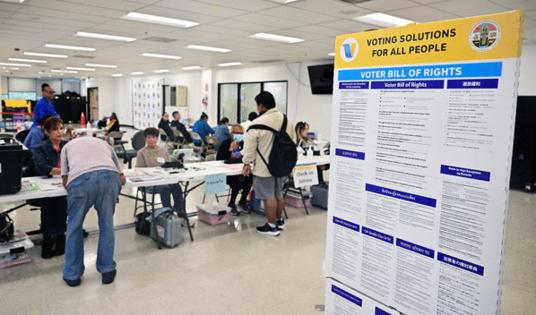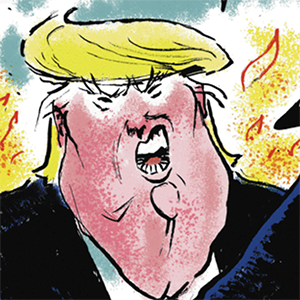Editorial: Voters approve Prop. 36, the tough-on-crime measure. But can California afford it?
Published in Op Eds
California voters sent a clear message Tuesday: They are sick and tired of crime.
Proposition 36, the measure that increases penalties for certain repeat drug and property offenses, led with 70% of the vote Tuesday night and was projected to easily win.
The combined results are a clear signal that even in liberal California, voters are pushing back on some of the criminal justice reforms of the past.
While disappointing to those who believe that Prop. 36 will move the state back to a period of mass incarceration, the results were not unexpected.
One of the most controversial and closely watched measures on the ballot, Prop. 36. had been polling well for several weeks, despite warnings that it could pack California prisons.
The marketing of Prop. 36
The campaign for the tough-on-crime measure was brilliant.
It rode the wave of public indignation over the infamous smash-and-grab break-ins at high-end stores in California and the brazen shoplifting that threatened the economic viability of small businesses.
It spoke to concerns about the rise in fentanyl deaths by requiring courts to warn repeat drug offenders that they could be charged with murder if they later sold or supplied illegal drugs to someone who then died of an overdose.
It even created a new classification of crime — the treatment-mandated felony — that offers rehab as an alternative to prison for repeat drug offenders.
That enabled supporters to market the measure as a progressive step, rather than a strictly punitive one — a war on addiction, rather than a war on drugs.
It all sounds great on paper — or in a campaign ad — but there’s a problem.
Prop. 36 promises treatment where none exists; nearly 40% of California’s counties have no residential treatment program, and those that do often have waiting lists. Nor are there the transitional shelters or the vocational training programs the measure also promises.
Without that key component, more people could end up behind bars for relatively minor crimes, since failure to successfully complete treatment can result in a three-year prison sentence.
Prop. 36’s promises of treatment are based on wishful thinking, which raises a question: Were voters conned into believing in something that does not exist?
What comes next
While we opposed Proposition 36, the voters have spoken. We respect that.
In fact, we would welcome seeing it live up to its promise by reducing property crimes and, most of all, easing the epidemic of fentanyl and other hard drug overdoses that have ended the lives of too many Californians. (According to the Centers for Disease Control, nearly 12,000 Californians died from drug overdoses in 2022, with the majority of deaths due to fentanyl.)
But let’s be realistic.
For the treatment approach to work, counties are going to need significant financial help developing and/or expanding programs.
Supporters say Prop. 1, the $6 billion bond measure voters approved in March, could finance drug treatment facilities, but that bond is primarily earmarked for treatment beds and supportive housing for people with mental illness.
So where will the money come from? Will it be diverted from other programs? Will there be an effort to ensure that programming is available in every area of California, even the most economically disadvantaged?
And the biggest question: Will Gov. Gavin Newsom and Democratic leaders in the Legislature find a way to deliver what Proposition 36 promised — and Californians are demanding?
Whatever happens, this much is clear: When it comes to crime, voters are not in a forgiving mood — even in California.
©2024 The Sacramento Bee. Visit at sacbee.com. Distributed by Tribune Content Agency, LLC.




























































Comments